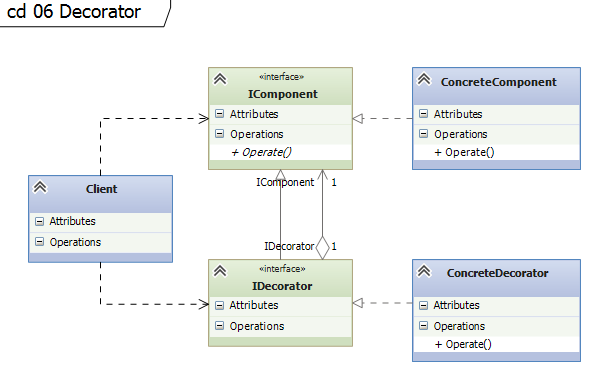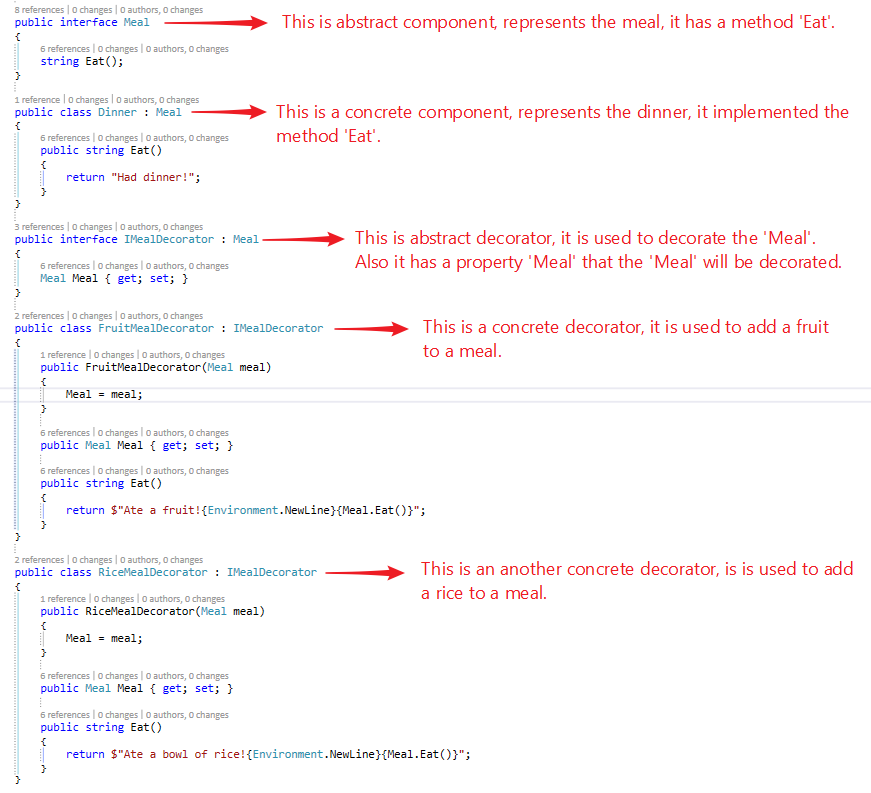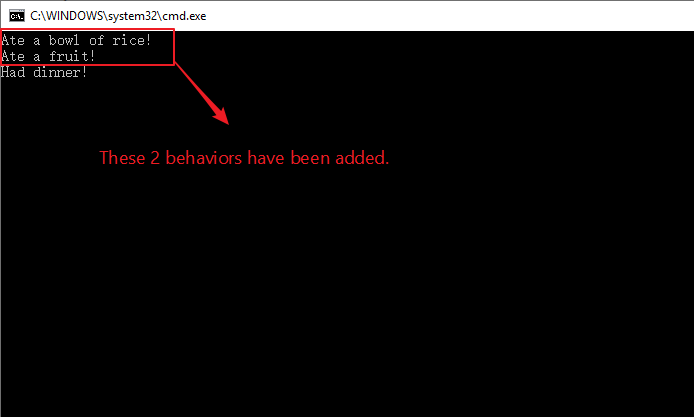本篇是结构型模式(Structural patterns)的第一篇,之所以选择Decorator模式第一个出场,是由于抓揪随机的结果。Decorator模式能够为行为带来灵活的组合,减少子类的数量,希望文章能够给大家带来一点帮助。
定义:
Decorator模式,能够将行为动态地添加到一个类型实例,而不会影响其它的实例。
解决的问题:
- 如何在运行时给一个对象添加新的行为
- 如何减少子类的数量
- 我们知道通过新建一个子类,也能够为类型添加新的行为,但是它存在一个明显的缺陷:随着新行为数目的不断增加,需要增加更多数目的子类,并且行为之间无法组合使用
怎么去解决:
- 通过定义一个接口代表原始对象本身,如IComponent
- 通过定义一个接口IDecorator,它继承自IComponent,同时通过组合的方式它拥有IComponent
- 对于IDecorator的任何请求,都会被重定向到IComponent,并且在重定向前后我们有能力添加新的行为
UML:
实例:
using System;
namespace DecoratorPattern
{
internal class Program
{
private static void Main(string[] args)
{
Meal meal = new Dinner();
IMealDecorator mealDecorator = new RiceMealDecorator(new FruitMealDecorator(meal));
Console.WriteLine(mealDecorator.Eat());
Console.ReadKey();
}
}
public interface Meal
{
string Eat();
}
public class Dinner : Meal
{
public string Eat()
{
return "Had dinner!";
}
}
public interface IMealDecorator : Meal
{
Meal Meal { get; set; }
}
public class FruitMealDecorator : IMealDecorator
{
public FruitMealDecorator(Meal meal)
{
Meal = meal;
}
public Meal Meal { get; set; }
public string Eat()
{
return $"Ate a fruit!{Environment.NewLine}{Meal.Eat()}";
}
}
public class RiceMealDecorator : IMealDecorator
{
public RiceMealDecorator(Meal meal)
{
Meal = meal;
}
public Meal Meal { get; set; }
public string Eat()
{
return $"Ate a bowl of rice!{Environment.NewLine}{Meal.Eat()}";
}
}
}




